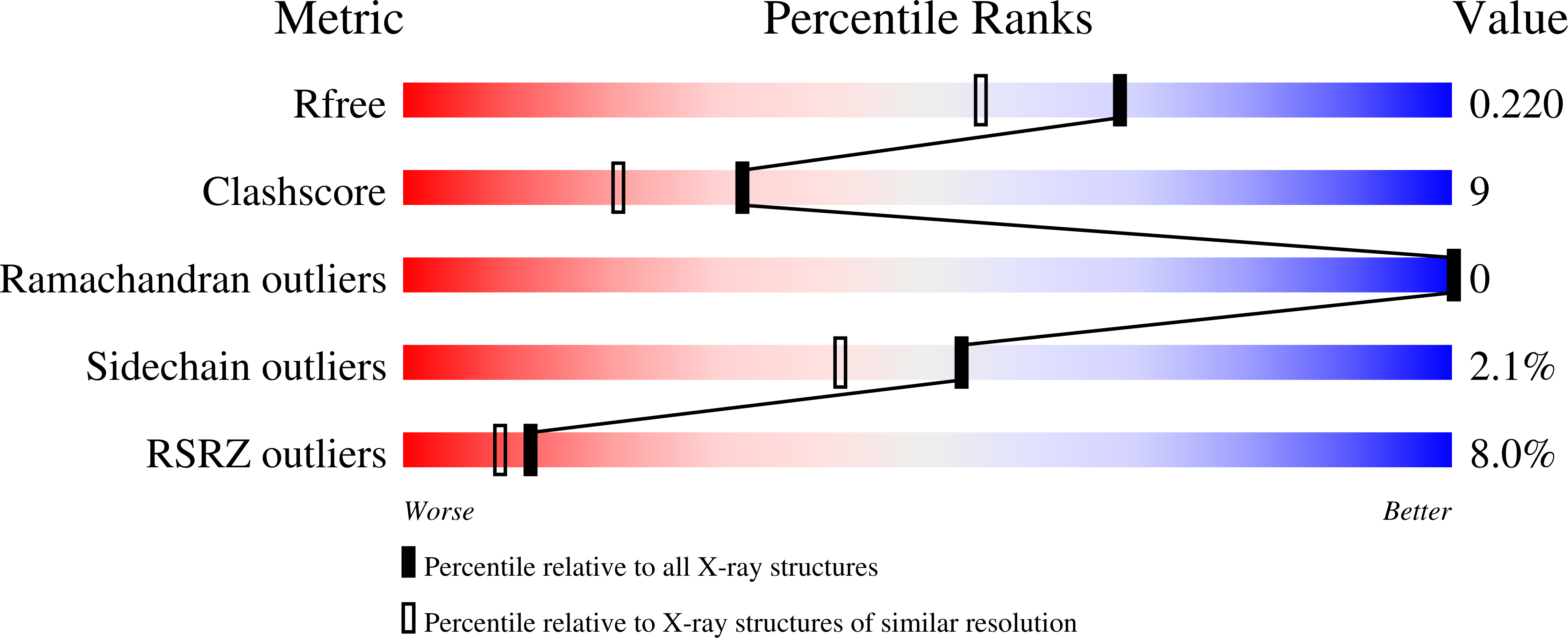MgF(3)(-) as a Transition State Analog of Phosphoryl Transfer
Graham, D.L., Lowe, P.N., Grime, G.W., Marsh, M., Rittinger, K., Smerdon, S.J., Gamblin, S.J., Eccleston, J.F.(2002) Chem Biol 9: 375-381
- PubMed: 11927263
- DOI: https://doi.org/10.1016/s1074-5521(02)00112-6
- Primary Citation of Related Structures:
1OW3 - PubMed Abstract:
The formation of complexes between small G proteins and certain of their effectors can be facilitated by aluminum fluorides. Solution studies suggest that magnesium may be able to replace aluminum in such complexes. We have determined the crystal structure of RhoA.GDP bound to RhoGAP in the presence of Mg(2+) and F(-) but without Al(3+). The metallofluoride adopts a trigonal planar arrangement instead of the square planar structure of AlF(4)(-). We have confirmed that these crystals contain magnesium and not aluminum by proton-induced X-ray emission spectroscopy. The structure adopted by GDP.MgF(-) possesses the stereochemistry and approximate charge expected for the transition state. We suggest that MgF3(-) may be the reagent of choice for studying phosphoryl transfer reactions.
Organizational Affiliation:
Computational & Structural Sciences, GlaxoSmithKline, Gunnels Wood Road, Stevenage, Herts, United Kingdom.




















